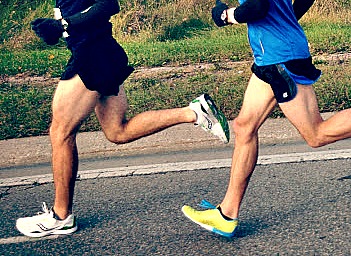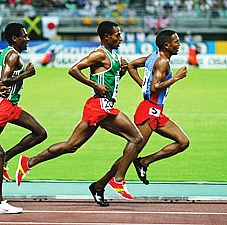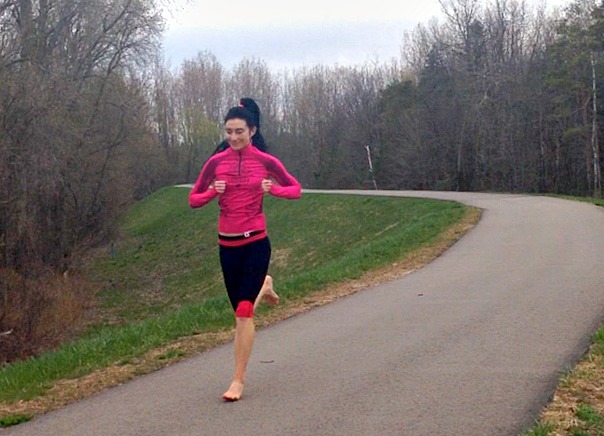Running makes your body stronger, but it can be harmful when you are running on empty and fatigued because your running form may suffer. When you are slugging it half way through a marathon, the last thing you feel like doing is straightening your posture and running tall, but as long as you run forefoot, you can avoid most overuse injuries related to heel strike running.
Why its Important to Run Forefoot When Fatigued
Run forefoot when fatigued is important because it prevents shock transmission and the risk of musculoskeletal injuries. In many cases, when a runner becomes fatigued, they tend to not only slow down, but favor a heel strike landing. As hard as it may seem, a forefoot runner must not let their form breakdown and must make the concerted effort in keeping a higher cadence and the feet off the ground.
- Under fatigued conditions, if a runner deviates from their forefoot running technique, stride rate decreases which increases peak shank deceleration.
- Fatigued muscles also have a lower shock-absorbing capacity, even more reason to avoid heel strike when running because heel striking initiates shock waves that can damage the musculoskeletal system.
 Switching to a heel strike landing when fatigue results in high impact forces that may damage articular cartilage.
Switching to a heel strike landing when fatigue results in high impact forces that may damage articular cartilage.
Overall, fatigue amplifies heel strike transients which overloads the musculoskeletal system and increases the risk of injury.

The only solution to prevent heel strike-initiated shock waves is to not heel strike in the first place.
To keep up an accurate forefoot strike landing, bend the knees and push forward with your center of mass (as shown above).
Maintaining a forefoot strike landing is one of the few strategies the body has to protect itself from overloading during running under any conditions.
More on Why Avoid Heel Strike:
- Heel Strike Runners Injure More
- Heel Striking Increases Risk of Knee Injury
- Heel Strikers: Higher Risk of Metatarsal Stress Fractures When Fatigued
- Elite Runner Suffers Broken Femur During Half-Marathon, Why?
References:
Clarke, T.E., Cooper, B.L., Hamill, C.L., & Clark, D.E. (1985). The effect of varied stride rate upon shank deceleration in running. J Sports Sci, 3, 41-49.
Radin, E.L., Parker, H.G., Pugh, G.V., Steinberg, R.S., Paul, I.L., & Rose, R.M. (1973). Response of joints to impact loading. J Biomech, 6, 51-57.
Verbitsky, O., Mizrahi, J., Voloshin, A., Treiger, J and Isakov, E. (1998). Shock transmission and fatigue in human running. J Appli Biomech, 14, 300-311.
Bretta Riches
BSc Neurobiology; MSc Biomechanics candidate, ultra minimalist runner & founder of RunForefoot. I was a heel striker, always injured. I was inspired by the great Tirunesh Dibaba to try forefoot running. Now, I'm injury free. This is why I launched Run Forefoot, to advocate the health & performance benefits of forefoot running and to raise awareness on the dangers of heel striking, because the world needs to know.
Latest posts by Bretta Riches (see all)
- Are Minimalist Shoes Good for Seniors? YES! - 14/04/2024
- BIG Deals On Running Gear And More! - 09/04/2024
- Why Are My Feet Tired After Running? - 04/04/2024


Leave a Reply